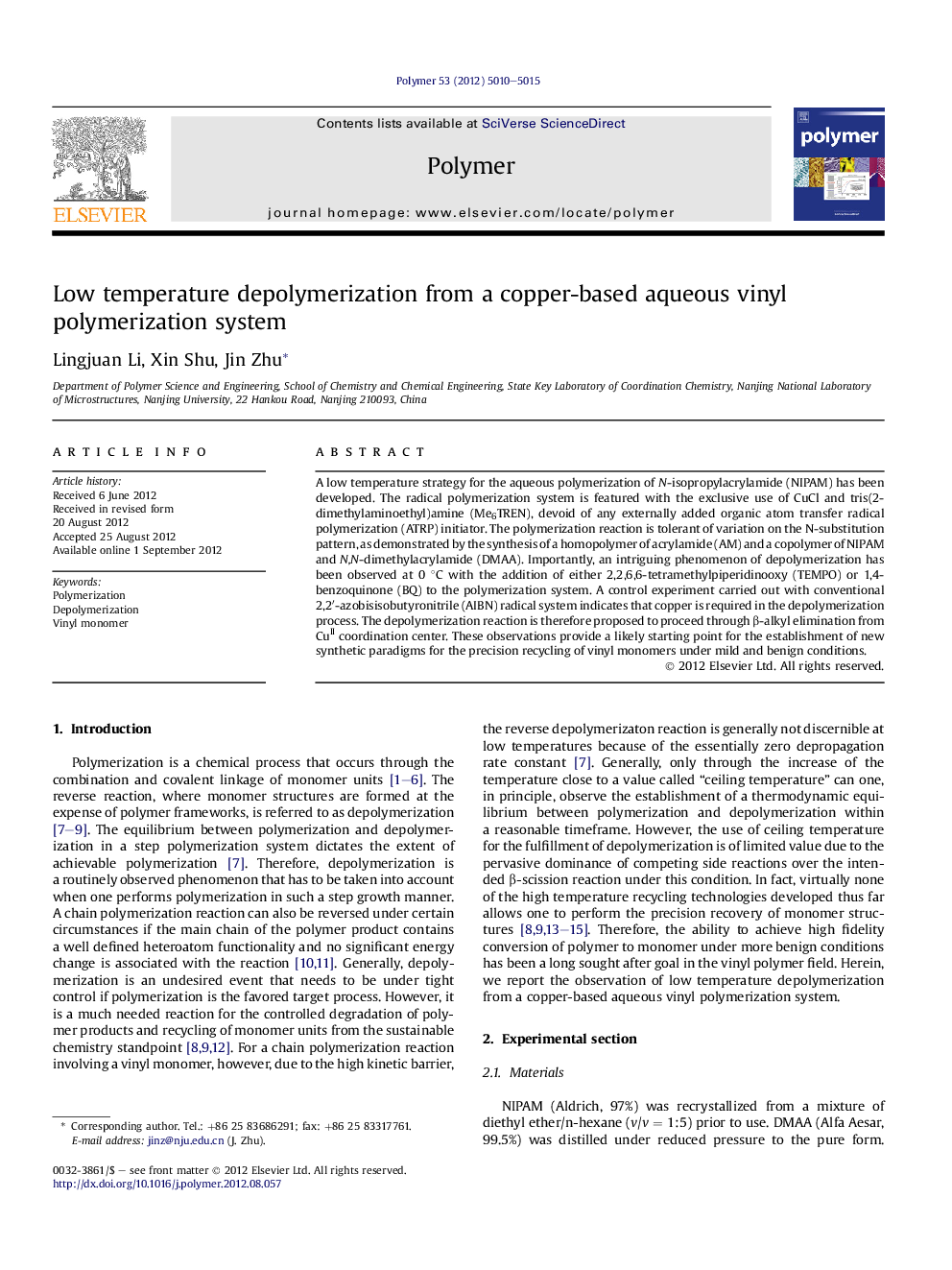| Article ID | Journal | Published Year | Pages | File Type |
|---|---|---|---|---|
| 5183262 | Polymer | 2012 | 6 Pages |
A low temperature strategy for the aqueous polymerization of N-isopropylacrylamide (NIPAM) has been developed. The radical polymerization system is featured with the exclusive use of CuCl and tris(2-dimethylaminoethyl)amine (Me6TREN), devoid of any externally added organic atom transfer radical polymerization (ATRP) initiator. The polymerization reaction is tolerant of variation on the N-substitution pattern, as demonstrated by the synthesis of a homopolymer of acrylamide (AM) and a copolymer of NIPAM and N,N-dimethylacrylamide (DMAA). Importantly, an intriguing phenomenon of depolymerization has been observed at 0 °C with the addition of either 2,2,6,6-tetramethylpiperidinooxy (TEMPO) or 1,4-benzoquinone (BQ) to the polymerization system. A control experiment carried out with conventional 2,2â²-azobisisobutyronitrile (AIBN) radical system indicates that copper is required in the depolymerization process. The depolymerization reaction is therefore proposed to proceed through β-alkyl elimination from CuII coordination center. These observations provide a likely starting point for the establishment of new synthetic paradigms for the precision recycling of vinyl monomers under mild and benign conditions.
Graphical abstractDownload full-size image
